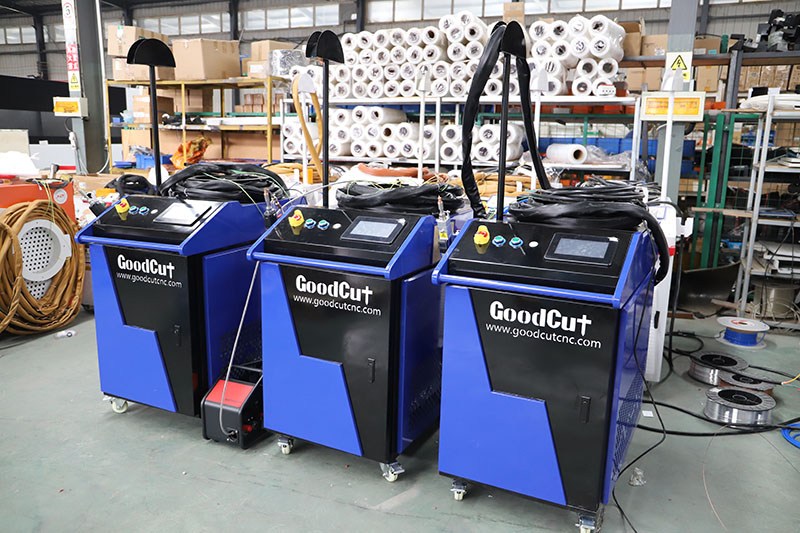
Welding galvanized steel presents unique challenges due to its zinc coating. This coating is essential to prevent rust and corrosion. While this coating offers advantages durability, it also complicates welding. Understanding the nuances of weld galvanised steel is crucial for achieving strong, reliable welds without compromising the material's integrity. In this article, we will explore the basics of laser welding galvanised steel and compare it to other welding methods.
Galvanized steel is a type of steel that has been coated with a thin layer of zinc to protect it from corrosion. This zinc coating acts as a barrier, preventing moisture and oxygen from reaching the steel and causing rust. The galvanization process typically involves dipping the steel into molten zinc, creating a strong bond between the zinc and the steel.
✔ Advantages of Galvanized Steel: The main advantage of galvanized steel is its strong corrosion resistance. It is ideal for outdoor and industrial applications. It is commonly used in construction, automotive manufacturing, and various other industries where durability is crucial.
Welding galvanized steel involves more complexities than welding uncoated steel. The primary issue arises from the zinc coating, which vaporizes at a lower temperature than the steel itself. When you begin welding galvanized metal, the heat from the weld causes the zinc to vaporize, releasing fumes that can be harmful if inhaled. This vaporization also leads to several welding defects.
✔ Zinc Fumes: The most immediate concern when welding galvanized metal is the production of zinc fumes. These fumes are not only toxic but can also cause a condition known as "metal fume fever," characterized by flu-like symptoms. Proper ventilation and respiratory protection are essential when welding galvanized steel.Understanding these challenges is essential for anyone looking to successfully weld galvanized steel. The next sections will explore different welding methods, including laser weld galvanised steel, and how they compare in dealing with the complexities of welding galvanized materials.
Can you weld galvanized steel? The simple answer is yes, but it comes with specific challenges that need careful consideration and preparation. Galvanized steel, coated with a layer of zinc to protect against corrosion, presents unique difficulties during welding, primarily due to the zinc's low vaporization temperature.
✔ Zinc Coating Challenges: The zinc coating on galvanized steel vaporizes at a much lower temperature than the steel itself. When welding, this can lead to the release of toxic zinc fumes, which are hazardous if inhaled. Additionally, the vaporization of zinc can cause porosity in the weld, leading to weaker joints and potential structural issues.In conclusion, while welding galvanized steel is possible, it requires careful preparation, the right welding technique, and strict adherence to safety precautions to ensure a successful and safe welding process.
Laser weld galvanised steel offers a modern solution to the challenges associated with welding galvanized materials. This method has become increasingly popular due to its precision, speed, and ability to cut common issues such as porosity and zinc vaporization.
✔ Precision and Control: Laser welding provides highly concentrated heat, which reduces the total heat input to the material. This minimizes the risk of excessive evaporation of the zinc coating. This also reduces porosity and contamination issues in the weld pool.
While laser weld galvanised steel offers many advantages, other traditional welding methods are also used depending on the specific requirements of the project. Here’s a comparison of these methods:
✔ MIG Welding (Metal Inert Gas Welding): MIG welding is one of the most common methods used for welding galvanized metal. It involves feeding a wire electrode through a welding gun while shielding the weld area with an inert gas. MIG welding can be effective but often leads to issues with porosity due to the zinc coating. Proper preparation and ventilation are crucial to mitigate these issues.Each of these methods has its advantages and disadvantages when applied to weld galvanized steel. Choosing the right method depends on the specific application, material thickness, and the required weld quality.
Proper preparation is essential when welding galvanized metal to achieve strong, clean welds and cut potential problems.
✔ Removing the Zinc Coating: One of the most effective ways to reduce issues when welding galvanized steel is to remove the zinc coating from the areas to be welded. This can be done by grinding or sanding down the coating until bare steel is exposed. This step helps prevent zinc vaporization and the associated problems like porosity and contamination.
The question can you weld galvanized to steel is common among those working with different metal types. The answer is yes, but it requires careful attention to technique and preparation.
✔ Challenges in Welding: Welding galvanized steel to uncoated steel introduces unique challenges. The zinc coating on the galvanized steel can cause issues like porosity and contamination in the weld pool, which can weaken the weld.Welding galvanized steel to uncoated steel is certainly possible, but it requires the right preparation and techniques to ensure a successful and durable weld.
Welding galvanized steel involves certain risks, particularly due to the zinc fumes released during the process. Following proper safety precautions is essential.
✔ Fume Control: Zinc fumes are hazardous and can cause metal fume fever, a condition that resembles flu symptoms. To control fumes, always weld in a well-ventilated area. Use fume extraction systems to capture and remove harmful vapors from the workspace.By adhering to these safety precautions and best practices, you can significantly reduce the risks associated with welding galvanized metal, ensuring a safer and more effective welding process.
Contact: Smile Ji
Wechat: 008618396857273
Whatsapp: 008618396857273
Tel: 008618396857273
Email: smileji@goodcutcnc.com
Add: 402 Jinxing Longsheng Building, High-tech district, Jinan City, Shandong Province, China